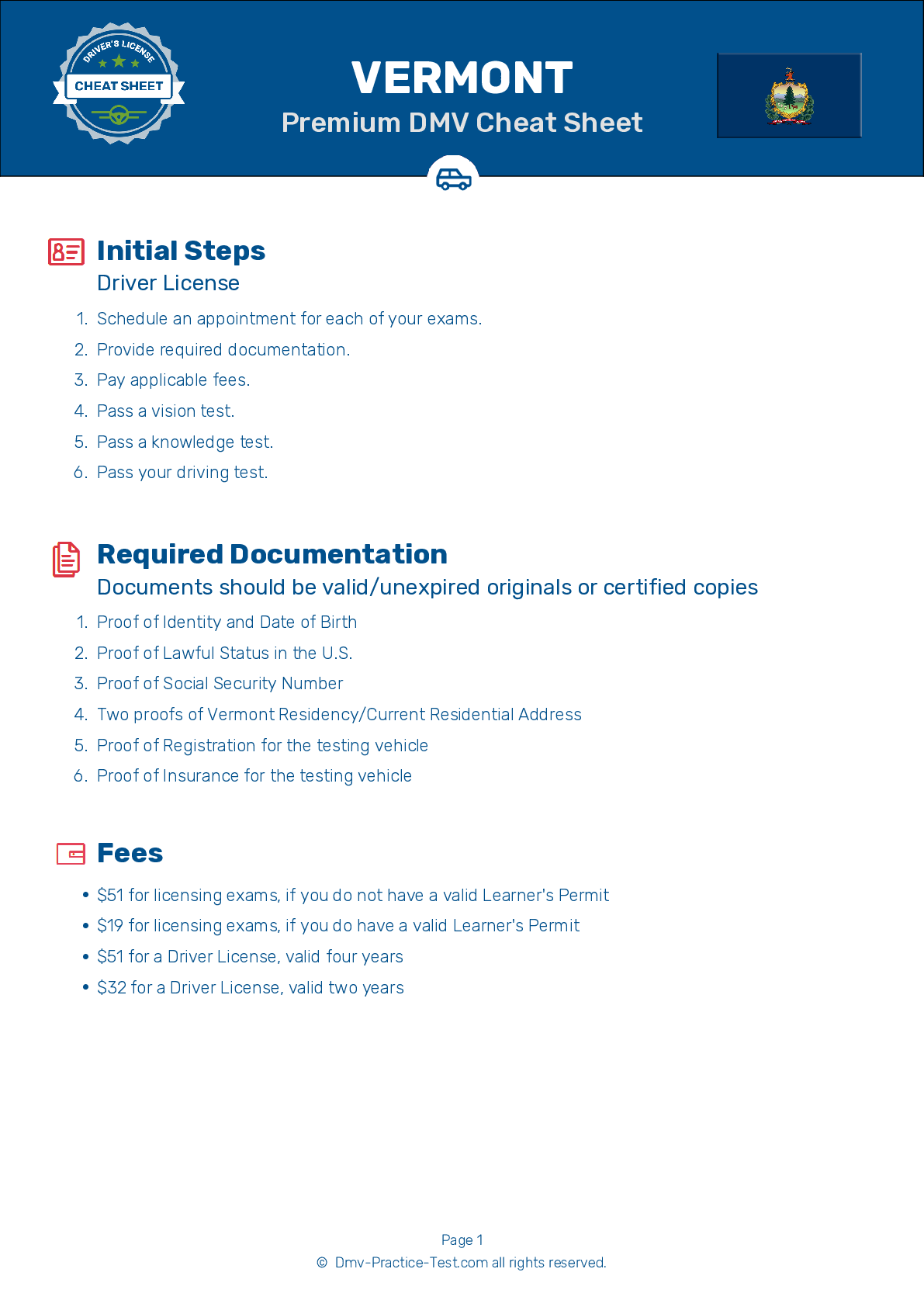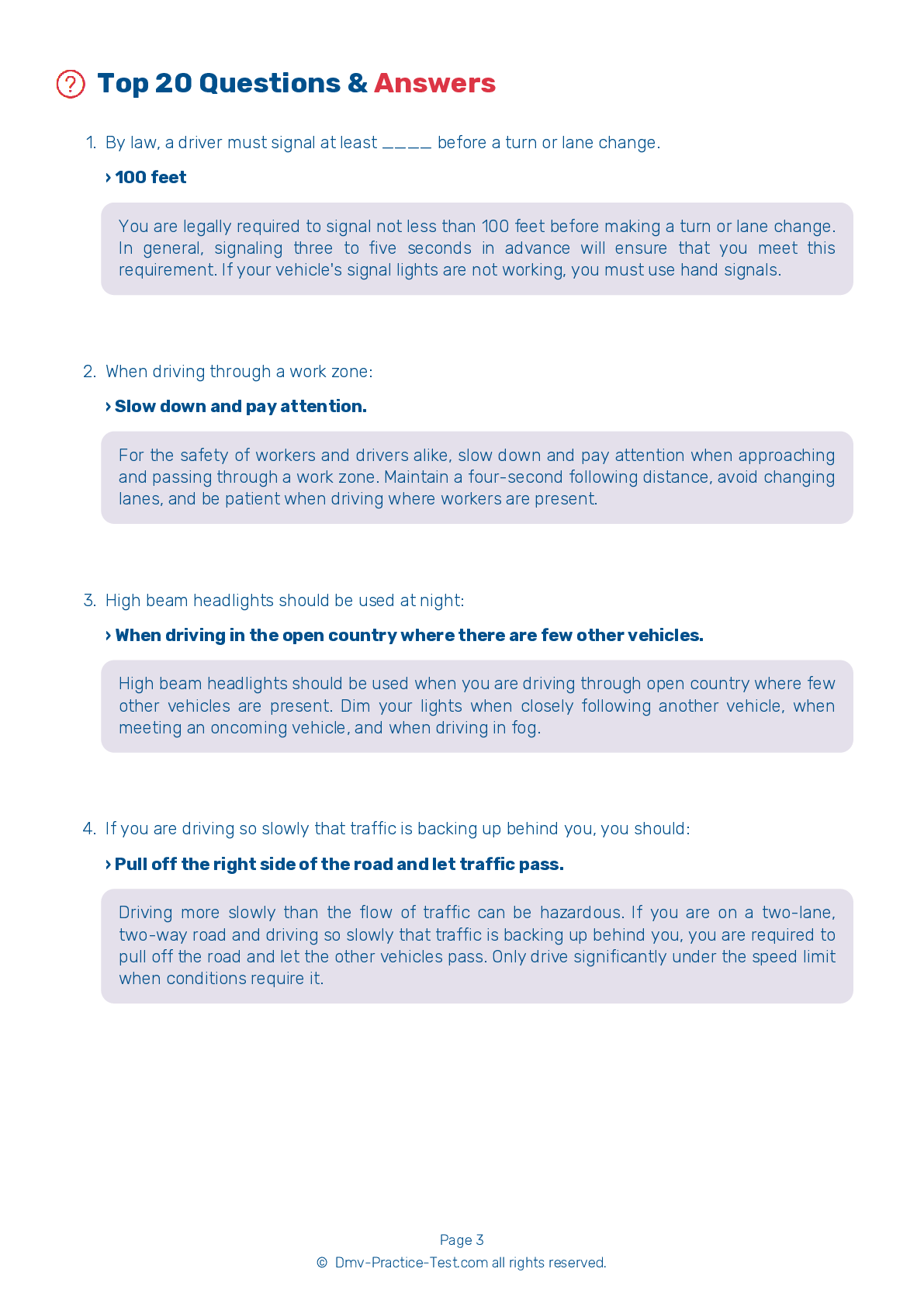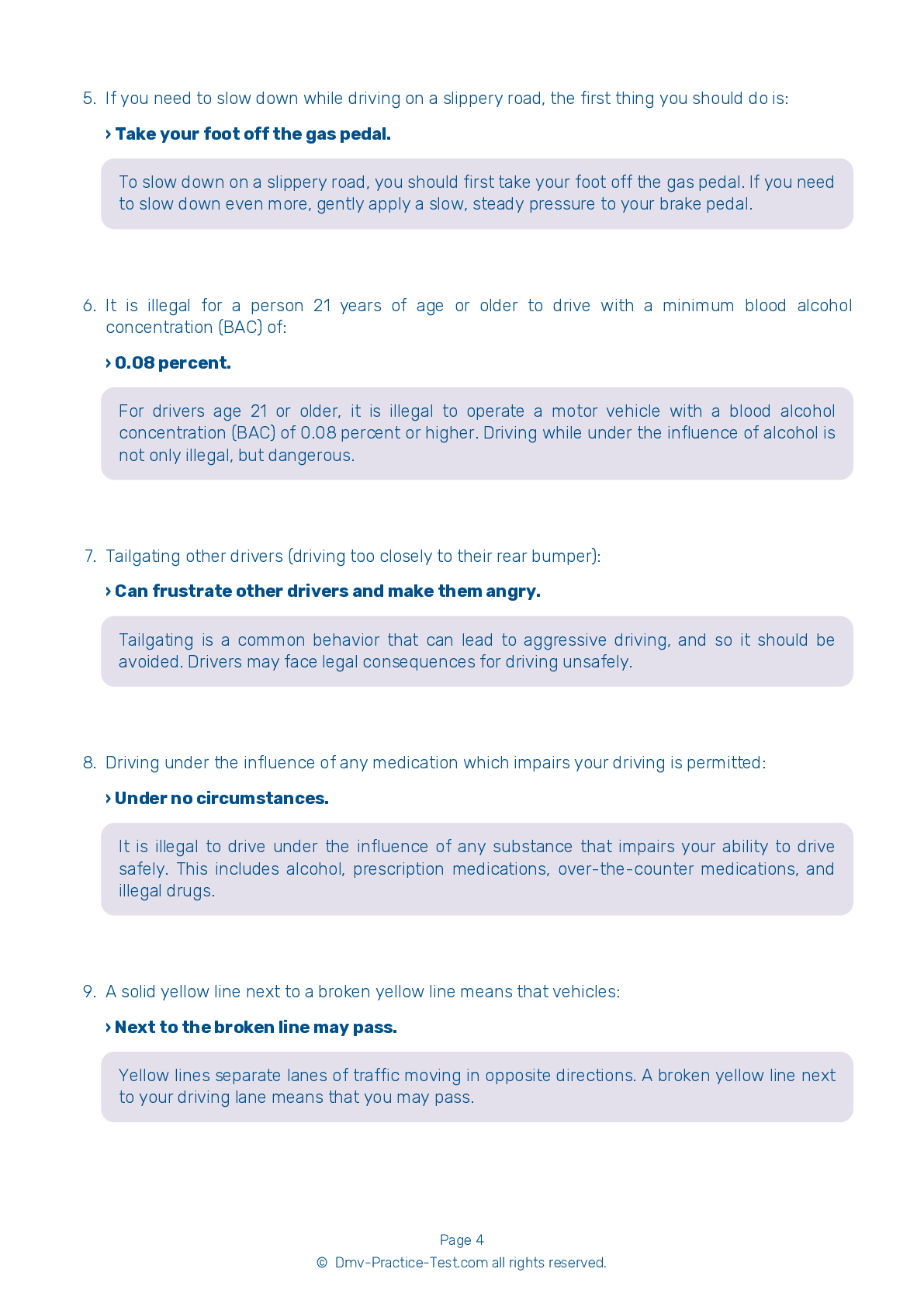FREE Vermont DMV Practice Test #15 Page 3 of 3
The Vermont DMV practise examinations have been updated for January 2025. It includes questions based on the Vermont Driver Handbook's most significant traffic signals and legislation for 2025. Use actual questions that are very similar (often identical!) to the DMV driving permit test and driver's licence exam to study for the DMV driving permit test and driver's licence exam.
On the practise exam, each question gets a tip and explanation to help you remember the concepts. The written component of the official Vermont DMV test will include questions about traffic rules, traffic signs, and driving statutes, as well as knowledge from the Driver Handbook.
To obtain a passing grade, you must correctly answer 16 of the 20 questions. Use the practise exam provided by the Vermont Department of Motor Vehicles to help you prepare for your instruction permit or driver's licence.
The DMV exam is available in several languages.
Using any kind of testing assistance will result in an automatic fail, and the DMV may take additional action against your driver's licence, so stay away from it.
14 . You may drink alcoholic beverages in a vehicle on a public highway:
It is against the law to consume or possess any alcoholic beverage while on a public road or sidewalk. Additionally, storing an open alcoholic beverage container in an area of a motor vehicle normally occupied by the driver or passenger is prohibited on any public road.
15 . If another driver cuts you off in traffic, you should:
To avoid the dangers of road rage, you should never take it personally if another driver cuts you off in traffic. Just let it go and continue driving safely.
16 . Which of the following is not a safe action when passing?
When passing, you should always leave at least four feet of clearance between your vehicle and any vehicle that you are overtaking. Be especially cautious when passing a bicycle on the roadway.
17 . You are driving on a busy street and your vehicle’s accelerator sticks open. You should:
If your vehicle’s accelerator sticks open, your vehicle will continue to maintain its speed or accelerate, even if you remove your foot from the gas pedal. Turn off the ignition, using care to move the ignition switch only far enough to stop the engine and not engage the steering wheel locking mechanism. Apply your brakes and move off the road to a safe area.
18 . When driving under icy or snowy conditions, which driving technique will help drivers avoid crashes?
Reduce your speed when roads are snow-covered or icy. Doing this and increasing your following distance are the most important techniques for avoiding crashes under snowy or icy conditions.
19 . Which of the following does not happen after drinking?
Alcohol reduces your reaction time, reduces your ability to see clearly, changes your judgment of speed and distances, reduces your ability to recover from the glare of headlights, and often reduces your inhibitions and makes you more likely to take risks.
20 . If you are driving so slowly that traffic is backing up behind you, you should:
Driving more slowly than the flow of traffic can be hazardous. If you are on a two-lane, two-way road and driving so slowly that traffic is backing up behind you, you are required to pull off the road and let the other vehicles pass. Only drive significantly under the speed limit when conditions require it.
2025 Vermont | Frequently Asked Questions
1. Not checking mirrors and blind spots before changing lanes or turning.
2. Speeding or driving too slowly for the conditions or posted speed limit.
3. Not coming to a complete stop at stop signs or red lights.
4. Incorrect signalling or not signalling at all.
5. Poor parking, especially parallel parking.
Remember, practice makes perfect, so take time to hone your skills.



